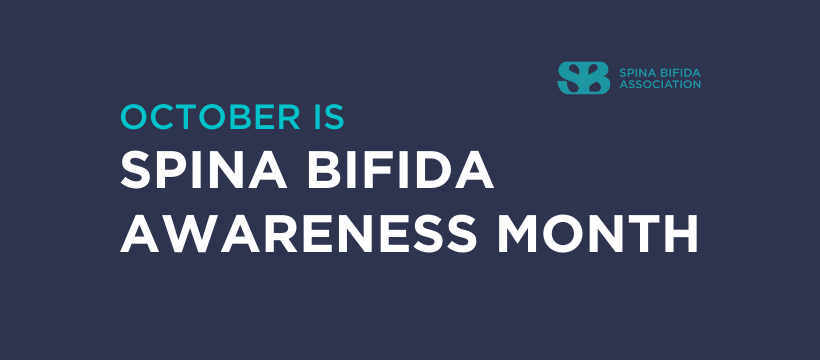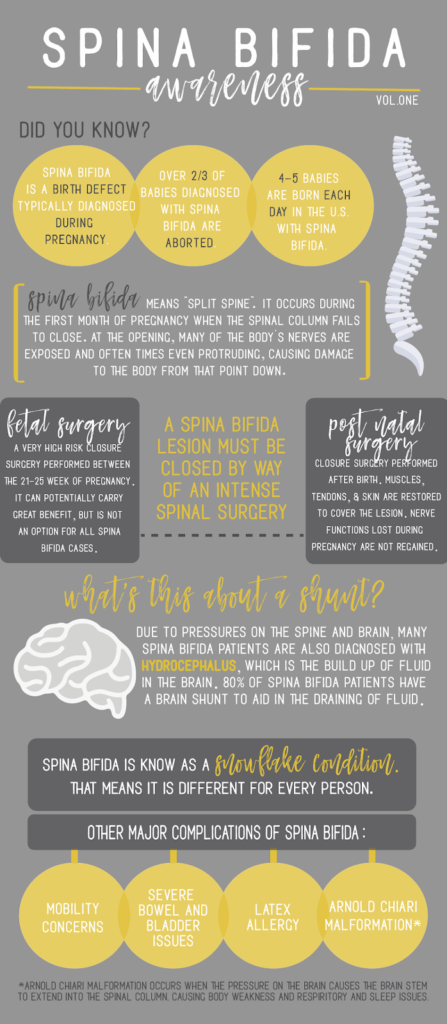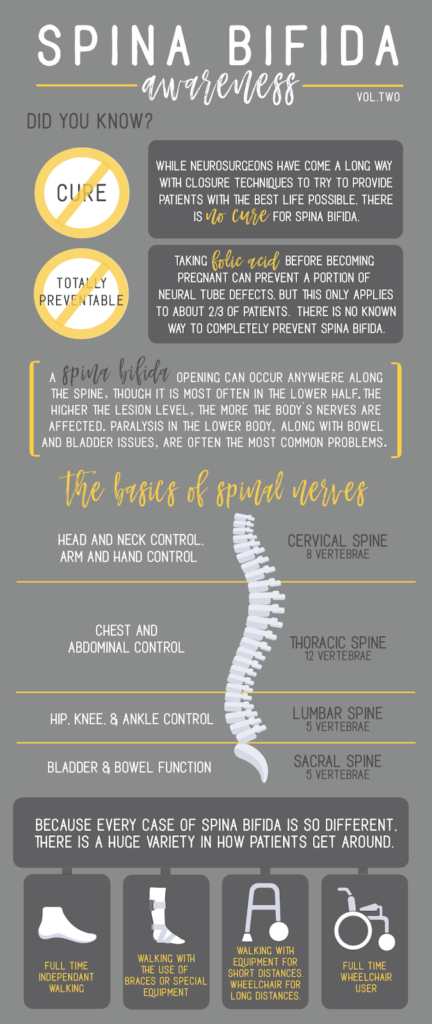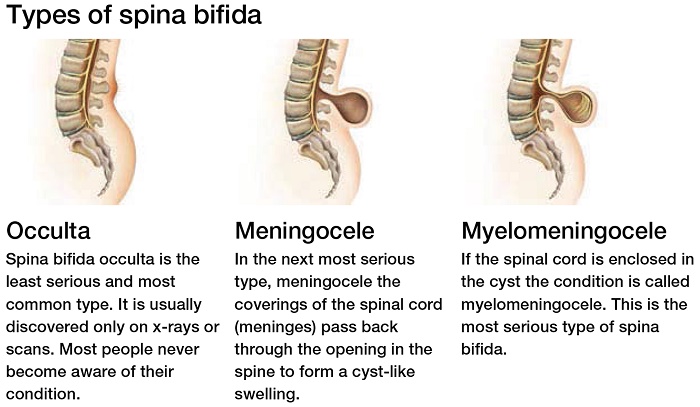
When you live with an obvious disability, especially one that is as misunderstood as Spina Bifida, it is easy to waffle between wanting to keep everything private and wanting to help people understand your life better.
Every October, I debate whether or not I should participate in Spina Bifida Awareness month on social media. Do people really care? Do they pay attention? What does it accomplish?
I decided that if I was going to do any kind of awareness about my disability, it would need to be more meaningful; deeper than just sharing a few graphics. I’ve tried to tell my own story at least a little bit and share on more social media than just my private profile. I’ve been sharing more on my blog Facebook page and my public Instagram account, along with my private profile.
What I’ve not made time to do until now is blogging. So, I’m doing this intro post with plans to hopefully write more later. There’s so much to say about Spina Bifida that it’s hard to figure out what to write and what not to write. I found several infographics from others that are a little old, but they give a good idea. So, with that person’s permission, I’m using those graphics to guide my story.
Spina Bifida at a glance
I think the easiest thing is to just go line by line and share a bit about how this does (or does not) affect me.

Nowadays, I think that Spina Bifida is more well-known but like with anything, the more “education” some people have, the easier it is to get confused and believe wrong things. Information is power, to be sure, but power for good or for evil?
For example, the first line of this graphic. Spina Bifida was not something that was discoverable or looked for much if at all in the 70s when I was born. Even when my mom told her doctor she thought something was wrong because I didn’t move much in the womb, he blew her off.
Diagnosis and “treatment”
But now we have all these tests and women want to know every single thing about their baby before it’s born. We also have the sad next piece of information, which is that a large chunk of the babies diagnosed in-utero with Spina Bifida never get the chance to become who they were created to be because they are aborted.
Women use the excuse that they are “saving” their child from a lifetime of hardship. But they are robbing their child of a lot of triumphs. Or they don’t want to put up with raising a “less than” child without even considering adoption.
That leads me to the next statistic, which is that 4-5 babies are born daily with Spina Bifida in the U.S. I don’t remember exact numbers, but the number of babies born with SB was much, much higher when I was a child. Some of that is because women have been taught to take folic acid as a potential preventative measure, but it’s also because of the abortion factor. I can’t decide if that breaks my heart or infuriates me more. Anyone who supports a “woman’s right to choose” to abort her child because it’s going to be born with a disability subconsciously informs me that they see me and my life as meaningless.
Fetal surgery does not cure Spina Bifida
On to the next line, which I don’t have a lot to say about. I always thought that Spina Bifida meant “open spine” but it basically means the same as split spine. Once I describe its effect like a spinal cord injury, people tend to understand that where the split or opening is located makes a major difference in what damage is done.
The next part of this section refers to fetal surgery. I see a lot of misguided beliefs about the fetal surgery, which started about 20 years ago, if not more. It was considered experimental for a long time and was very rare. Now, it’s considered a standard of care for qualifying babies (I don’t know what qualifies them). The problem I see is, people think it’s this “breakthrough” surgery just because they are hearing about it for the first time and it’s being done as a mainstream surgery as more hospitals across the country. Many adults in the SB community kind of roll our eyes when people share these articles with us like it’s new information!
The postnatal surgeries is basically what makes most of us have a chance at survival. The opening has to be closed and it’s often done as soon as possible to reduce further damage and infection. I have a noticeable scar from my surgery that people can often see when I lean over. I call it my Bifida Tramp Stamp!
It’s important to note that no surgery can cure Spina Bifida. Even the prenatal surgery just works to lessen the damage done to the spine and it doesn’t take away the birth defect.
Related complications
Spina Bifida is called the snowflake condition because every single person is different. I can be born at the same time, same medical team, same lesion type and location, and have my outcome be different than the other person.
The interesting thing about Spina Bifida that is hard to understand and even more difficult to explain is that SB happens once. It’s a singular event that causes a myriad of resulting complications for the rest of the person’s life. So it is not something that gets progressively worse. The Spina Bifida opening is done. But what can get worse is the complications.
I had my first shunt installed when I was a couple of months old, from what I’ve been told. Mine is a VP shunt, which means the excess fluid drains into my abdominal cavity. Some people lose the need for a shunt as they age. I do not believe this is the case for me despite no complications since I was a child. A neurosurgeon told me years ago mine was still intact and functioning. I can also tell a difference if I fall asleep without elevating my head because the fluid isn’t able to drain properly.
I also have all the major complications listed on that graphic except the last one, Chiari malformation, which I could develop later.
More of the story

Two common misconceptions about Spina Bifida is that it’s totally preventable and there is a cure. I touched on the second one above when I talked about the prenatal surgery. Despite what is implied on shows such as Grey’s Anatomy, the surgery does not make the child no longer affected by having Spina Bifida and it certainly doesn’t cure it.
The first misconception, that it’s 100 percent preventable, results in a lot of shaming for moms whose baby develops Spina Bifida. The assumption is she did something wrong or didn’t do something she should have. They have found ways of reducing the birth defect, but not totally eradicating it. There are so many potential risk factors that it’s impossible to cover them all. Just a few things that have been proven to be a factor include: MTHFR gene mutation, folic acid deficiency, Agent Orange (discovered after Vietnam War), family history, etc.
It’s true that Spina Bifida can happen anywhere on the spine, just like a spinal cord injury. Most lesions or openings are in the lower half. If it goes too high, there is not a way I know of that the baby can survive long, if at all. What’s interesting (and confuses some people) is that the lesion is not just one vertebra, In fact, it usually exposes more than one. For example, I consider my lesion to be relatively small and it’s L-3/4. That means the third and fourth vertebra of the lumbar portion.
I’m going to go a little “off graphic” here and add something. When we talk about our “level” of Spina Bifida, we are talking about where on the spine it happened, like mine is L-3/4. There is also discussion of “type” of Spina Bifida. There are 3 types (some say four but that’s a long story). I have the most severe type, Myelomeningocele.

The last part of the big graphic talks about mobility.
It is interesting to me that it mentions each person is different on how mobile they are and what aids they need. I’ve never been fully mobile, but I used leg braces for the first half of my life and sometimes a walker when I was healing from surgery or reteaching myself to walk every time I got a new set of leg braces (every couple of years, less frequently when I stopped growing in middle school).
I always knew I would go to a chair full-time, but I started earlier than anticipated because I put on weight in college. And no, if I lost all the weight now I would not be able to walk.
There’s one more thing that the graphic doesn’t cover that I’m going to touch on briefly. It’s one of those “I never talk about it because I don’t want to draw attention to it” things. That is the cognitive and psychological impacts that are common for people with Spina Bifida. Many, if not most of us, live with some form of depression and anxiety. I live with both and are being treated for both.
Some of the cognitive issues include struggling with executive function (me, big time), sensory processing (me too), spatial issues (less of an issue for me but basically you struggle to determine visual depth and distance), and a host of other logical processing issues. This does not make us dumb. Many of these issues can be managed with the proper therapies and coping mechanisms. I think it’s important to identify these issues and combat them instead of one of two potential responses: avoidance or using the issues as an excuse to not excel as much as possible.
Whew! If you’re still with me, you deserve a cookie or something. I’m going to try and write more about Spina Bifida this month but I figure if I have it all year long, I can write about it all year long, right?

I would love a cookie! Thanks! Really, this was an amazing read! Thanks for explaining things sp clearly. I feel blessed for learning more about this condition. I hope you do write more about Spina Bifida and other topics!
I absolutely love this 💜 thank you for sharing.
My husband was born with spina bifida, and he rocks his perma-wheels. Sometimes literally lol. He rocks back in his chair, doing a wheelie, and people freak out because they think he’s going to tip over. But he plays adaptive sports, so he has a lot of upper body strength.
He’s one of the most amazing people I know: motivated, kind, smart, funny (though not as funny as he thinks lol), and I think God designed him just for me. We share your view on abortion–it’s absolutely heartbreaking–and your love of Jesus.
I’m so happy to come across this article. Thanks again for writing it.
This article is amazing! You are Amazing!!! Love you so much, Mom & Dad
Thank-you, Jamie,for this excellent article. I think you were about 3 or 4 years old when we first met you and your parents soon after Lauren was born. Talking to them and seeing you as a delightful, happy, active child gave us tons of hope and encouragement. We understand now that instead of being a “mistake,”Lauren was a special gift from God who touched the lives of countless numbers of people during the 24 years we had with her. We, too , like you, encountered many misconceptions about SpinaBifida along the way, which is why I so appreciate you sharing this factual article, along with some of your own experiences. The more people are educated about this disability, the more they are able to see each individual with SpinaBifida, not just as some one who is handicapped, but as a unique individual of great worth. Thanks again for shedding light on this often misunderstood subject.
Thank-you, Jamie,for this excellent article. I think you were about 3 or 4 years old when we first met you and your parents soon after Lauren was born. Talking to them and seeing you as a delightful, happy, active child gave us tons of hope and encouragement. We understand now that instead of being a “mistake,”Lauren was a special gift from God who touched the lives of countless numbers of people during the 24 years we had with her. We, too , like you, encountered many misconceptions about SpinaBifida along the way, which is why I so appreciate you sharing this factual article, along with some of your own experiences. The more people are educated about this disability, the more they are able to see each individual with SpinaBifida, not just as some one who is handicapped, but as a unique individual of great worth. Thanks again for shedding light on this often misunderstood subject.
Thank your for your post! Our youngest song just got an X-ray back, identifying him with SB Occulta L5/S1. We haven’t gotten to talk to the doctor yet but your blog is very helpful. It’s helpful to hear I shouldn’t be beating myself up for being folic acid deficient and also know that I’ve not been an overly sensitive mom towards the struggles I’ve seen in him with constipation and motor coordination.